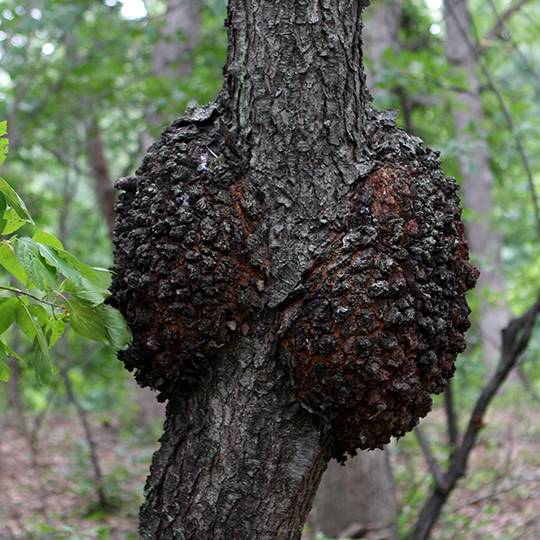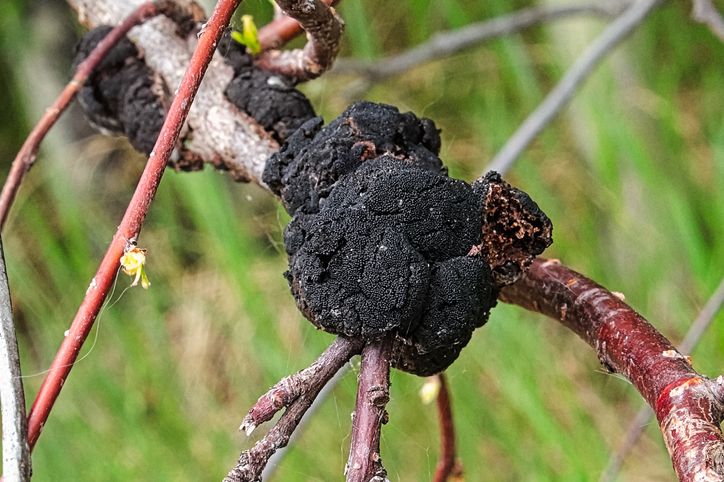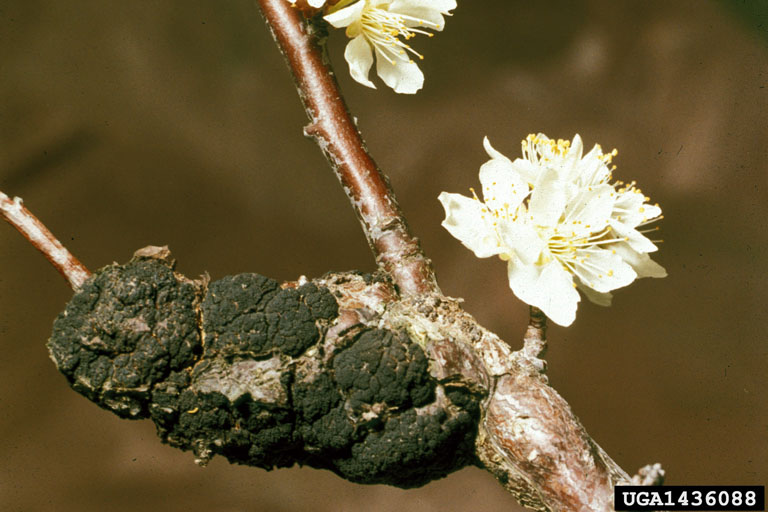Black knot fungus is an unsightly disease that affects various trees, particularly those in the Prunus genus, such as cherries, plums, and relatives. The fungus lives up to its name with its easily recognizable black knobbly shape. Should you be concerned about black knot fungus? And how can you recognize and treat this tree disease to keep your trees healthy and looking their best? Below, we will explore what black knot fungus is, the types of trees it affects, its signs and symptoms, and, most importantly, how to prevent and treat it.
What is Black Knot Fungus?
Black knot fungus (Apiosporina morbosa) is a fungal disease that primarily infects fruit-bearing and ornamental trees in the Prunus genus, including plums, cherries, apricots, and almonds. This fungus shows up as hard, black, elongated galls that encircle branches and, in severe cases, can girdle and kill parts of the tree.
The life cycle of black knot fungus involves the release of spores from existing knots during wet, mild weather, typically in spring. These spores infect new growth, where they develop over one to two years before becoming visible as characteristic black galls. The fungus spreads through wind, rain, and even insects, making it highly contagious in affected areas.

What Trees Get Black Knot Fungus?
Black knot fungus primarily targets trees within the Prunus genus. This includes:
- Plum Trees (Prunus domestica): European and Japanese plums are particularly susceptible to black knot.
- Cherry Trees (Prunus avium and Prunus cerasus): Sweet and sour cherries can both be affected.
- Apricot Trees (Prunus armeniaca): Though less commonly affected, apricots can still suffer from black knot.
- Almond Trees (Prunus dulcis): Rarely, but possibly, almonds can be affected by black knot.
- Ornamental Prunus Species: Trees like flowering cherry and purple-leaf plum are also at risk.
While these are the primary targets, other related species can sometimes be susceptible, especially in regions where the fungus is prevalent.
Black Knot Signs and Symptoms
Know what signs to look out for so you can identify black knot fungus early on, which increases the chances of successful treatment. The most distinctive symptom is the presence of black, tar-like galls on the branches and twigs of the affected trees. These galls start small and green but gradually enlarge and turn black, becoming hard and rough in texture.
Here are the main signs and symptoms to watch for:
- Small, Swollen Areas on Branches: Early stages of infection appear as small, light brown swellings on new growth.
- Progressive Gall Development: Over time, these swellings expand and darken, forming the characteristic black galls.
- Cracked and Deformed Branches: Infected branches may become deformed, cracked, or girdled by the galls, leading to dieback.
- Reduced Vigor and Yield: Severely infected trees may exhibit reduced growth, vigor, and fruit production.
- Leaf Yellowing and Drop: In advanced cases, leaves on infected branches may yellow and drop prematurely.

Preventing and Treating Black Knot
Prevention and early intervention are key to managing black knot fungus. Here are some effective strategies:
Preventive Measures
- Prune Regularly: Regular pruning to remove infected branches is crucial. Make cuts at least 4-8 inches below the visible galls and sterilize pruning tools between cuts to prevent spreading the fungus.
- Choose Resistant Varieties: When planting new trees, select varieties that are resistant to black knot fungus.
- Proper Tree Spacing: Ensure adequate spacing between trees to promote good air circulation, reducing the humidity that favors fungal growth.
- Maintain Tree Health: Healthy trees are more resistant to diseases. Ensure proper watering, fertilization, and overall care to keep trees vigorous.
Treatment Methods
- Prune Infected Branches: During dormancy (late fall or winter), prune out infected branches, ensuring to cut well below the galls. Pruning trees when dormant helps reduce spore contamination. Destroy pruned material by burning or disposing of it properly.
- Fungicidal Sprays: Apply fungicidal sprays, particularly in early spring before bud break and during wet periods. Copper-based fungicides can be effective in preventing spore germination.
- Sanitize Tools and Surroundings: Regularly sanitize pruning tools and clean up fallen debris around the tree to minimize sources of infection.
- Monitor and Repeat: Regularly inspect trees for new infections and promptly remove any new galls.

Will Black Knot Kill My Tree?
While black knot fungus can damage a tree’s health and looks, it is rarely a direct cause of tree death if managed properly. However, if left untreated, the fungus can girdle branches, leading to loss of water and nutrients, canopy decline, and weakening of the tree. Over time, this can make the tree more susceptible to other diseases and environmental stresses, potentially causing decline and death.
The key to preventing tree mortality from black knot fungus lies in early detection and consistent management. Regular pruning of infected branches, maintaining tree health, and monitoring and treating for tree pests and diseases can significantly reduce the impact of this disease.
Can You Eat Plums and Fruit From Trees With Black Knot?
One common concern among gardeners is whether fruit from trees infected with black knot fungus is safe to eat. The good news is that the fungus primarily affects the branches and twigs, not the fruit itself. Therefore, plums and other fruits from infected trees are generally safe to eat, provided they show no signs of rot or secondary infections.
However, it is essential to thoroughly inspect and clean the fruit before consumption. Any fruit that appears damaged, moldy, or has come into contact with infected branches should be discarded to avoid potential contamination.
Stay vigilant, be proactive, and protect your trees! If you ever need assistance, contact the team of Certified Arborists and Experts at A Plus Tree!





